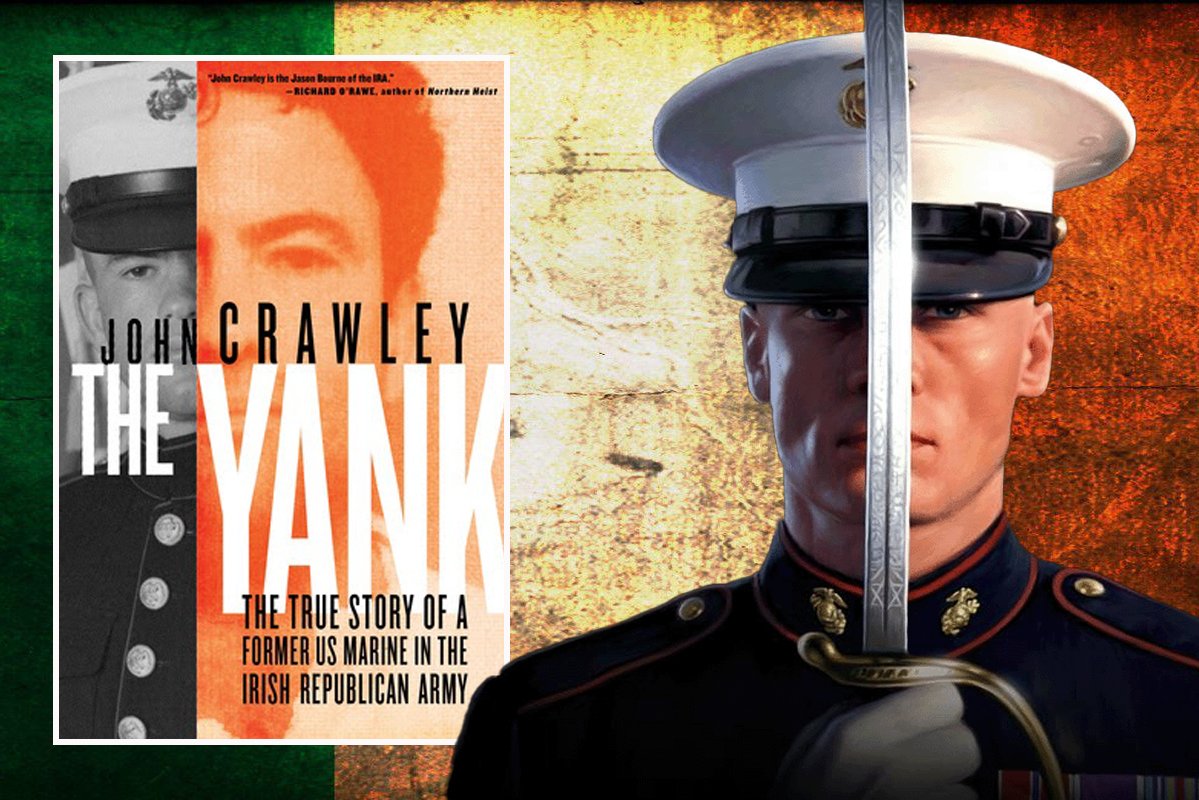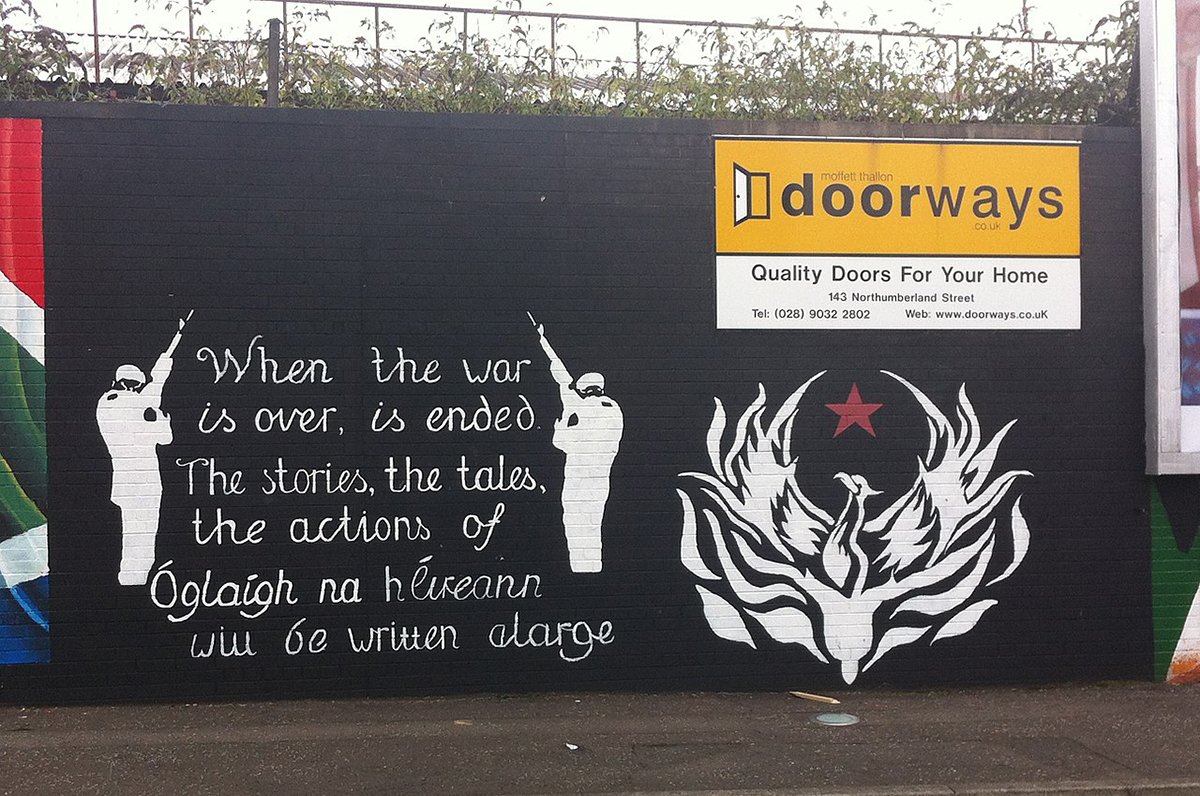
The Yank tells the remarkable story of a US Marine who joined the Irish Republican Army. Composite by Coffee or Die Magazine.
|
NOTICE: This post contains affiliate links. We may earn a commission if you buy through these links. |
The sun crested the horizon beyond South Armagh, Ireland, casting a sheet of pink and yellow light over the surrounding fields. Lying in the cold, wet grass, John Crawley rested his cheek against the buttstock of his rifle. A patrol of British paratroopers was approaching along a gravel road. This was the moment Crawley had been preparing for for his entire life.
As a proud member of the Irish Republican Army, or IRA, he had no qualms about killing a British soldier. He viewed the situation in black-and-white terms: His job was simply to remove a British gunman from Irish politics. Thinking back to his training as a United States Recon Marine, Crawley focused his dominant eye on his sights, letting the paratrooper fade out of focus, and squeezed the trigger. The report from the AR-180 shattered the early morning silence, and the unlucky Englishman crumpled to the ground.

In his upcoming memoir, The Yank: The True Story of a Former US Marine in the Irish Republican Army, Crawley recounts his strange journey from the streets of New York and Chicago to the jungles of Okinawa, where he served with 3rd Marine Reconnaissance Battalion, and finally to the killing fields of Ireland during the height of the Troubles. Crawley speaks from experience, never glossing over his own shortcomings, and tells a compelling story of one Marine’s dogged determination to rid Ireland of what he viewed as an illegal occupation. Crawley’s writing is blunt and at times awkward, but his story is so enthralling that it’s easy to overlook the rough edges.
Born in New York in 1957 to Irish parents, Crawley dreamed of fighting for a free and unified Ireland since he was a child. He moved to Ireland when he was a teenager to finish high school, then returned to the United States with an unusual plan to serve in the US military and take the skills and knowledge he acquired through that experience back to Ireland and put them to use on behalf of the IRA. Crawley enlisted in the Marine Corps in 1975 with the hope of becoming a Reconnaissance Marine. After a stint with 1st Battalion, 9th Marines, he succeeded in landing a spot in the Recon Indoctrination Program and ultimately ended up in 3rd Recon Battalion. As a member of 3rd Recon, he received training in underwater infiltration, amphibious reconnaissance, demolitions, and small-unit tactics. True to his original plan, Crawley returned to Ireland when his enlistment was up and joined the IRA.

The British government never released a statement confirming Crawley’s killing of the paratrooper, but apparently, that wasn’t uncommon. In attempts to downplay the human toll of the 30-year conflict between Irish nationalists and the British soldiers and loyalists known as “the Troubles,” Britain often neglected to report casualties. But the IRA took note of Crawley’s successful ambush, and his credibility with the organization improved.
Crawley moved up the ranks of the IRA. He became heavily involved in gun smuggling, working closely with notorious criminal Whitey Bulger. During one smuggling run in 1984, Crawley helped transfer 7 tons of weaponry — including heavy machine guns, rifles, and hand grenades — from a Boston-based fishing vessel into an Irish vessel named the Marita Ann. Before making landfall, the Marita Ann was seized by the Irish Navy, and Crawley was sentenced to 10 years in prison. Crawley served his full sentence but was arrested again in 1996 and sentenced to 35 years in an English prison after attempting to plant explosives around London with the goal of knocking out the city’s power grid. He was released after serving just four years of his sentence as a result of the Good Friday Agreement, which officially ended the Troubles.

In The Yank, Crawley describes his journey into the shadowy ranks of the IRA, and later into prison, where he rebuffed a proposal to be an informant for the CIA. For a man once dubbed “the Jason Bourne of the IRA,” Crawley doesn’t communicate in the subtleties of a spy, but in the blunt manner he became accustomed to as a Recon Marine and an IRA foot soldier. He never uses flowery language or deviates from the meat of the story he feels compelled to share. At its core, The Yank is an adventure filled with scenes of combat, espionage, and smuggling, but it reads more like an Irish Catholic confession. The riveting story of violence, national pride, and the blurred lines between freedom fighters and terrorists is available for preorder now.
The Yank: The True Story of a Former US Marine in the Irish Republican Army by John Crawley, Melville House, 288 pages, $28.99.
Read Next:

Mac Caltrider is a senior staff writer for Coffee or Die Magazine. He served in the US Marine Corps and is a former police officer. Caltrider earned his bachelor’s degree in history and now reads anything he can get his hands on. He is also the creator of Pipes & Pages, a site intended to increase readership among enlisted troops. Caltrider spends most of his time reading, writing, and waging a one-man war against premature hair loss.
BRCC and Bad Moon Print Press team up for an exclusive, limited-edition T-shirt design!
BRCC partners with Team Room Design for an exclusive T-shirt release!
Thirty Seconds Out has partnered with BRCC for an exclusive shirt design invoking the God of Winter.
Lucas O'Hara of Grizzly Forge has teamed up with BRCC for a badass, exclusive Shirt Club T-shirt design featuring his most popular knife and tiomahawk.
Coffee or Die sits down with one of the graphic designers behind Black Rifle Coffee's signature look and vibe.
Biden will award the Medal of Honor to a Vietnam War Army helicopter pilot who risked his life to save a reconnaissance team from almost certain death.
Ever wonder how much Jack Mandaville would f*ck sh*t up if he went back in time? The American Revolution didn't even see him coming.
A nearly 200-year-old West Point time capsule that at first appeared to yield little more than dust contains hidden treasure, the US Military Academy said.












